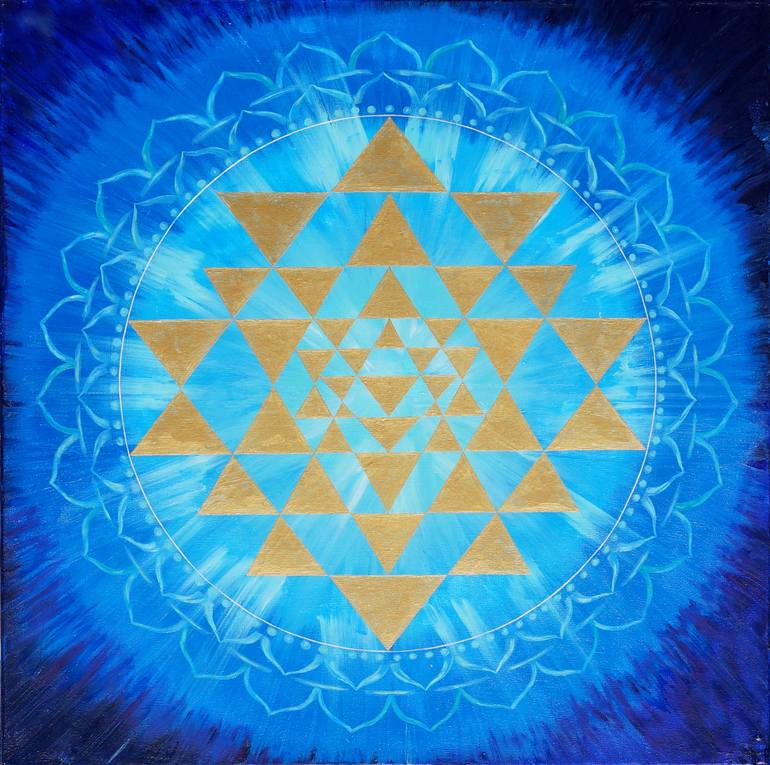Blueprints for Men
“Men cannot change if there are no blueprints for change” — bell hooks
Over the past several months, I have been ruminating on Peggy Orenstein’s research in Boys & Sex: Young Men on Hookups, Love, Porn, Consent, and Navigating the New Masculinity. It indicates how little change there has been in the masculine identities and behaviors that young men assume during adolescence and early adulthood since the 1950s(!). I keep asking myself why we have made so little progress. It’s clear that some inner work reengineering the male psyche is not happening. Looking for an answer, I have increasingly wondered whether a spiritual dimension is missing from the development process.
 My own journey down the path to becoming a spiritual adult male began with meditating for stress reduction in college. A decade later, I read Robert Moore and Douglas Gillette’s King Warrior Magician Lover just before we had the first of our two sons. Its Jungian archetypal imagery spoke to me deeply, and for many months I swam in the collective unconscious of these archetypes, journaling as I took on the demands of parenting and earning a living.
My own journey down the path to becoming a spiritual adult male began with meditating for stress reduction in college. A decade later, I read Robert Moore and Douglas Gillette’s King Warrior Magician Lover just before we had the first of our two sons. Its Jungian archetypal imagery spoke to me deeply, and for many months I swam in the collective unconscious of these archetypes, journaling as I took on the demands of parenting and earning a living.
As the feminist movement in the 90’s struggled to make gains in the workplace, it became clear that men were not conditioned to make the fundamental changes women demanded for their professional or personal lives. Yes, we ‘allowed’ women into our men’s club, but more often than not, we expected them to perform like men at work, often requiring them to adopt our bad behaviors and prove their fitness without equal pay. Meanwhile, many of us went about our lives as we had before.
Three decades later, we have now arrived at a point where we are experiencing increased polarization between men and women, and an epidemic of anxiety, depression, substance abuse, and suicide among men. This seems especially strange when, for more than twenty years, Daniel Goleman, Michael Gurian, William Pollack, Dan Kindlon, Michael Thompson, Niobe Way, and Judy Chu have been issuing clarion cries that we must pay more attention to the emotional lives of men, young and old.
It’s no surprise that a new generation is once again turning to retreat work, meditation, and yoga, while men’s groups study the Jungian concepts advanced by Campbell, Bly, Moore, Gillette, and Fox for answers.
 The problem with the King Warrior Magician Lover model of masculinity and the sacred masculine as so beautifully depicted in The Hidden Spirituality of Men is the archetypes that they advance are derived from the patriarchal structures that we are now trying to evolve away from. As a result, many men’s retreats and websites still working with these images tend to reify and reintegrate outdated models of masculinity that we need to update and expand.
The problem with the King Warrior Magician Lover model of masculinity and the sacred masculine as so beautifully depicted in The Hidden Spirituality of Men is the archetypes that they advance are derived from the patriarchal structures that we are now trying to evolve away from. As a result, many men’s retreats and websites still working with these images tend to reify and reintegrate outdated models of masculinity that we need to update and expand.
The existence of these powerful images in our collective unconscious presents both an opportunity and a hurdle to our advancement: we can’t just throw them out, but we can’t live by their wisdom unedited either. Whether or not we like it, we must rewrite them, as decades of behavior modification therapy, changes in rules in the workplace, and social protest have not solved the root problem. Transformational change must come from the depths within in order rebuild the modern American Male psyche. The question is how.
Reframing masculinity requires serious work across multiple dimensions of our being: the shame that we are taught to attach to our bodies from a very early age; the ways in which the “feminine” aspects of our personalities are conditioned out of us, destroying some of the very capacities that we need to become whole; the shut-down of heart-centered communication as we strengthen our “rational” capacities at the expense of all others; the narrow range of sexual identity that men are expected to perform despite the increasing research indicating that a range of sexualities is normal among men; the rediscovery of the language of consensual touch and its impact on our physical, emotional, and mental health; and the requirement that we redefine our definitions of well-being and success, not only for our self-preservation, but for the planet. Yes, as so many contemporary pundits proclaim, we do need to learn how to become open and vulnerable, but so much more remains to be done.
What I am talking about is a spiritual journey for men, a 21st century quest in search of the “authentic” or New Male. What do us guys really need to do? Some of us need to strip ourselves down to the studs completely; remove the carefully constructed male identities that we have wrapped around our minds, bodies, and souls; and rebuild our identities from the inside out. What I’m talking about is a remodel not a teardown. I believe that most men are basically good guys with some very (self-) destructive habits. With careful, thoughtful, compassionate work, it’s entirely possible that we men can reframe our beings.
 It is frustrating that in 2022 we are still looking for “blueprints for change” when many men have spilled gallons of ink on these issues already. Any number of voices have provided maps of the interior landscape that we need to explore based on their lived experience pioneering new ways of being male from the 60s to the present.
It is frustrating that in 2022 we are still looking for “blueprints for change” when many men have spilled gallons of ink on these issues already. Any number of voices have provided maps of the interior landscape that we need to explore based on their lived experience pioneering new ways of being male from the 60s to the present.
The real question is why aren’t we rolling up our sleeves? I suspect the answer is that most men are okay with the status quo, scared of change, or don’t see themselves as having an issue or even being part of a problem. Ever the rugged individualists of myth and legend, we are content to run the race with our broken conditioning rather than step into the unknown. Unfortunately, success in this race is not an individual event; it’s a team sport that impacts our communities.
The evidence is mounting that our failure to deal with our dominance-based culture of masculinity is not just causing harm to women but is contributing to a decline in our own physical and mental health and a plethora of societal and environmental conflicts.
We could stem the rising tide if we just get busy. The bare bones of the “New Male” are deeply embedded in our DNA. We just need to learn how to express it.
Here’s where I think we need to do some work (and some resources to get started):
#1 Reversing the sense of shame men feel.
Our culture’s attitudes regarding the male body fundamentally shapes our identities as adult men, equipping us with an extremely complicated relationship to our embodied presence. In some settings, we worship the male form; in others, we demonize it. For cisgender men, the conflicting messages begin early. Although our culture celebrates ways that the male body can be used as an instrument for good, men are also taught to feel shame about their bodies, specifically their genitals, from preschool on.
As we mature, our dominance-based culture of masculinity repeatedly sorts men into cohorts organized by our physical appearance and strength. During early childhood, performance in sport and other body-centric activities defines us. When puberty kicks in, we are sorted again by looks, height, and build. As we become sexually active, we are re-sorted once more by how much sex we engage in (or claim to). This sizing each other up in the locker room of life is deeply ingrained—physically, mentally, sexually—and never stops.
To begin to de-weaponize the male form, we need a social movement dedicated to reducing the stigma that society attaches to men’s bodies.
#2 Recovering our feminine sides.
From a very early age, boys are taught not to be “feminine.” These admonitions grow into some form of misogyny in many men and even into the exploitation of women. It also leads to men’s emotional shutdown.
In her book, Wild Mercy: Living the Fierce and Tender Wisdom of the Women Mystics, Mirabai Starr shows women (and men) how to integrate feminine wisdom into our identities—how to appreciate the sacredness of ordinary daily life; to take a break from the world so that we can more deeply connect with its grace and beauty; to celebrate our bodies and care for our physical well-being as a form of prayer. The book also asks us to appreciate the power of union and connection; understand the interrelatedness of all life and the power of individual action to heal deep division and wounds; and respect the gifts of intuition. These capacities need to be woven into the new masculine.
#3 Building our emotional and relational capacities.
Many researchers have illustrated the need to invest in the emotional intelligence of men. Converting theory into practice in The Relational Book for Parenting, Dr. Saliha Bava and Mark Greene contend that it is in the day-to-day interactions with our children or others that we model the behaviors that become the foundation for healthy relationships in adult life. Their book offers a gold mine of creative, playful practices that are fun for all ages and raise our relational and emotional EQ.
#4 Rebuilding our capacities for communication.
From our childhood encounters on the playground forward, we are taught to articulate our thoughts forcefully, to assert ourselves. As a result, we are not trained how to listen. Instead, we often dominate the discussion, stand firm in our beliefs, are ready to respond to contrarian views, cut down the opposition, and campaign vigorously for our positions (think parliamentary debate). Symbolic attempts to synthesize opposing points of view in our winner-take-all society are a sign of weakness.
Men also have little fluency in the language of touch. Because we experience touch less than women from our toddler years on, we are woefully inept in the nuances of expression that are possible in physical interactions. New societal norms are making it ever more difficult for young men to acquire fluency in this area. Developing these skills requires social contexts that are curious, playful, and collaborative.
#5 Expressing the full range of our sexual identities.
The emerging research on the different ways in which men experience and perform their sexuality, regardless of their stated orientation, is now prolific. A younger generation of men is showing signs that they are willing to embody and express their masculinities in ways that defy prior conventions. Ritch Savin-Williams’s portraits of young straight males should be required reading for anyone who has doubts on this issue.
#6 Redefining success.
Our culture of masculinity is driven by the desire to acquire the markers of success that confirm our status in the hierarchy—a big house, an expensive car, a huge bank account, a beautiful wife. New definitions of success that balance our personal ambitions against our impacts on others will help dismantle this hierarchy.
#7 Becoming a spiritual male.
Last, but not least, we really need to rediscover the spiritual dimension of our being. Recovering this aspect of our humanity not only restores health but is also central to any effort to rebuilding our identities from the inside out. No attempt to reframe masculinity can be successful unless it incorporates some time spent in the inner void.
This is the exploratory framework that I would recommend to any man looking to become a “new” male. It’s not a blueprint so much as a roadmap for a process of self-investigation. Ultimately, we must go on a spiritual journey to discover the interior space where we can grow into the hale and hearty frames of 21st century men embodying new forms of the sacred masculine.
Author note: Portions of this essay first appeared as “The Remaking of the American Male” and “Architectural Drawings for Men” on Medium and The Good Men Project.






